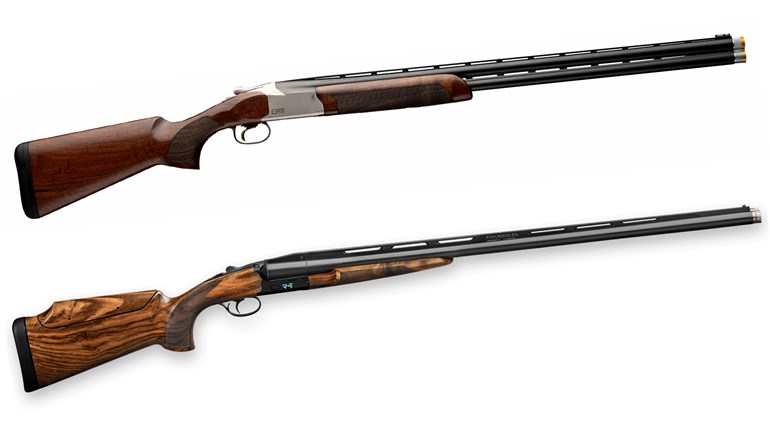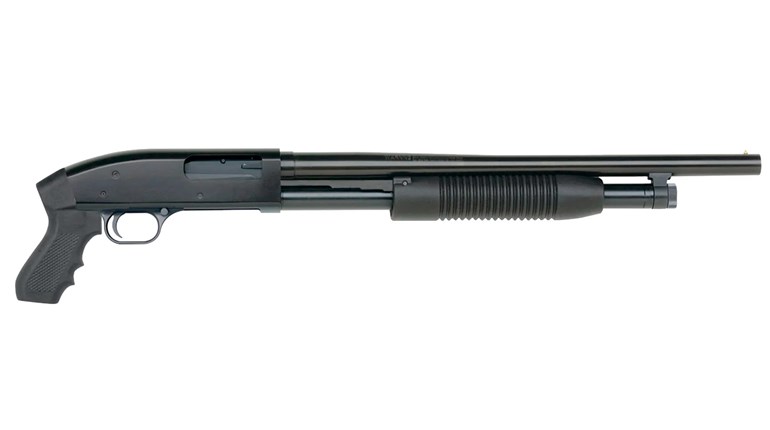
Few guns conjure up as much folklore as the shotgun. A longtime staple of those serious about home defense, it is unfortunately connected with many myths. The perpetuation of these myths is fueled by a lack of sold information about these reliable tools. Shotguns are not always on everyone’s must-have list because they tend to be a little more challenging to shoot. However with proper training, even small-framed shooters can master this utilitarian tool.
Why
Shotguns are a solid choice for home protection for a variety of reasons. The first and foremost reason is stopping power. This term is tossed around, but with a shotgun it has meaning. The chance of early fight-stopping shots with shotgun ammunition is a reality. The baseline for stopping power is a round’s ability to penetrate a minimum of 12 inches into a target. This is the general standard used by the FBI. Using #1 buckshot, a shotgun can deliver 16 pellets at high velocity into an intruder. These pellets combined have a surface area of 1.13 square inches and offer the equivalent of shooting someone 12 to 15 times simultaneously with a .32 Rem. or .380 ACP round. It is indeed a fight stopper. Simplicity of function is another reason that shotguns are a good choice for home defense. With even simple training, a shooter can easily and quickly bring a shotgun to bear on an intruder in a home. As a long gun it is easier to aim and keep on target than a handgun. Thus, a shotgun can be a formidable firearm in close quarters.
Ammunition
Thanks to Hollywood, the power of the shotgun has been over-exaggerated. No, the blast from a shotgun will not launch an adversary across the room and through your plate glass window. Those pesky laws of physics get in the way. The ammunition, however, is indeed powerful and the correct choices must be made. As mentioned earlier, buckshot produces a significant amount of force and damage. The worry has always been about over-penetration of the rounds. If I fire the shotgun in room A, how far will those rounds fly before they stop? While any round will penetrate drywall, the energy that they take with them drops dramatically. This is where training becomes so critical. If you are ever in a situation where you have to fire a shotgun (or any firearm) at a threat, you need to be conscious of what is beyond that target. Remember the rules of firearm safety. They exist for a reason. One nice feature of the shotgun is its ability to fire a wide array of ammunition, from birdshot to slugs. That gives us options for our home defense ammunition. Some factors to consider in choosing a defensive ammunition are home construction and general location of bedrooms. I have found that a good general defensive load is a #4 buckshot. This load has 27 pellets and will have minimal penetration inside a home, however it will still pack a large punch against a threat.
Shotguns are a solid choice for home protection for a variety of reasons. The first and foremost reason is stopping power.
I had the opportunity to visit with retired deputy Chuck Porter in Greenville, S.C., and we talked about shotguns. He has some fantastic insights. “Shotguns are a solid choice for home defense,” he said, but he cautioned against using them in mobile homes because of the thin walls and very close quarters. As a deputy, he has seen the aftermath of a shotgun blast and while the rounds penetrated the wall just inches behind the subject, he did not recall any other structural penetration.
We Can Make It Better
While out-of-the-box shotguns can serve the purpose of home defense adequately, a few modifications can elevate its effectiveness. One accessory for any home defense firearm is a light. You need to be able to confirm your target before unleashing lead down the hall.
Low-light sights are next. It is important to aim correctly before firing, and statistics tell us that a home-defense conflict typically will happen in low light. We need to be ready.
The final way to make it better is to shorten it. Most major manufacturers have a factory-built short barrel version of their tactical shotguns. You can also hire a gunsmith to shorten your existing gun. It is important to note that a short-barrel shotgun falls under some very specific ATF regulations. You need to verify that your state allows short barrels before you begin the long process of getting approved. While requiring heavy paperwork, the short-barrel shotgun offers improved handling and manipulation in close quarters.
Tips and Tactics
As with all firearms, the first thing you should do is seek professional training. Afterward, you can begin to fine tune your skills inside the home. A few solid tips are worth mentioning. First, do not go looking for trouble in your home unless you have to. If you hear noises, get your firearm and position yourself with a clear shot at the doorway into your area. Call 911 and get help on the way. If possible, rest the shotgun on the bed without sacrificing your shot. This will make aiming easier and slow fatigue.
Second, if you must move through your house, make sure that corners are clear before you move around them. Prudent use of light is helpful for searching in low light. Once again, you need to be able to confirm your target. A side note on the topic of light. I encourage you to use a handheld light for general searching and scanning. It can help avoid potentially catastrophic mistakes.
Third, keep the firearm as close to your body as possible when moving. In the event an intruder surprises you and grabs the gun, you have a better chance of retaining it. If the gun is too far away from your center, you could be easily disarmed and end up in a very bad situation.
Your Boom Stick
The shotgun is a classic firearm that still serves a solid role today. With training and the right accessories, the scattergun can be the 12-ga. insurance policy you are looking for.


































